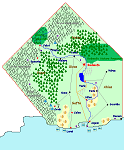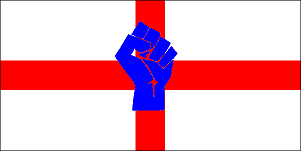Rolatia
| |||
| National motto: Intelligence is the Highest Asset | |||
| National anthem: N/A | |||

| |||
| Region | Wysteria | ||
| Capital | Redmofo | ||
| Largest City | Redmofo | ||
| Population | 1.7 billion | ||
| Suffrage | All Rolatian citizens aged 16 or over | ||
| Official Language(s) | English, Pacitalian, Japanese, Latin | ||
| Government President
Prime Minister Deputy Prime Minister |
Republic Norman Keviabuanal Joseph Edwards Gerry Anbaoal | ||
| Independent state Formation of the Republic Fascist Civil War Appointment of current PM |
April 24th 1922 1967-1977 July 9th 2004 | ||
| ISO Nation Code | RLTA | ||
| Currency | Rolatian generi (RGN)
| ||
| Time Zone | 0 | ||
| • Summer (DST) | +1 | ||
| Internet TLD | .rl | ||
| Calling Code | +312
| ||
| National Symbols • Sport • Animal • Fruit • Flower |
Football Eagle N/A N/A | ||
| UN Status | UN Member | ||
| Info: NationStates NSEconomy Pipian NS Tracker XML | |||
Contents
History
Rolatia is a large country of an estimated 5 million sq km, with a diverse cultural background, an excellent civil rights record, a good economic status and a wide and diverse political system which especially recently has seen a large variety of parties taking seats thanks to diverse views. It has had a rocky past, with many problems including civil wars in particular but is currently at a high socially, economically and diplomatically. The government is currently Liberal Socialist-led with Prime Minister Joseph Edwards at the helm, with the Parliamentary majority of the party a healthy 884. Interestingly, due to the current seven-year presidential term, the President - Norman Keviabuanal is actually a Conservative.
2000BC to 0AD
Rolatia was originally a divided set of tribes around the Dahinda river basin. There were frequent wars, and the tribes were very different. One tribe in particular stood out from the rest - the Sioas tribe, spread across the area from the northern basic all the way to the edge of the Farar woods. These were an overall pioneering tribe, with notably in 723BC establishing a democracy under King Haltyr I. This was sadly ended just three years later, after Haltyr died and his brother Thasrik I took the throne.
However, in 582BC a descendant of Haltyr known as Haltyr III started an epic quest - to unite the tribes of the Dahinda basin - into one noble nation. Many had to be killed, but even more agreed to join the Sioasi Empire. They became a force to be feared - they boasted an army of 10,000 skilled men. Through trade with smaller nearby tribes they became a rather rich nation. In 542BC, at the age of 56, Haltyr III died. Before he died, he had accomplished something important - he had refounded the democratic system.
The next king, Raidas II, was not one for peace, favouring war. Seeing the threat, the tribes of Safte united into the Saftean Empire, numbering nearly 1.4 million people. At this point, there were two 'capitals' - Dahinda City (near modern-day Taris) of Siaos and Nilon of Safte. Both cities contained around 70,000 people, and were thriving places. However, the next ten years of Raidas rule would lead to the decimation of the empires.
On September 11th 541BC, open war between Siaos and Safte was declared in what has been called by some historians as the First Rolatian Civil War. In the next week, 2750 Safteans in Siaos and 950 Siaosi in Safte were killed, military forces trapping them in their homes and burning them to the ground. Both nations increased their armies, with Raidas increasing the army to 50,000 and Saftean King Roisfh IV to 70,000. This was only the beginning of one year of constant war which claimed many thousands of lives and would be later viewed, considering population figures, as one of the bloodiest wars in history.
On January 2nd 540BC, at the border town of Faris which at that time was home to 18,000 Safteans, a fearsome invasion force of 20,000 met a Saftean defence garrison of just 7000 men and 15 transport boats whcih were set to be used on a strike to topple Taris. The result was a two-day battle which ended with an overall Saftean loss, with 4250 deaths for the Saftean military, 3500 for Siaos and 8000 dead civilians. 1500 Siaosans were left as sentinels and 15,000 men marched on towards Nilon.
Meanwhile, in Safte there were plans of their own. 17,500 men were sent out down-river towards Dahinda City, 22,500 towards the invaders and 10,000 sent back along to Calae. Siaosan spys somehow managed to communicate this to Raidas who sent out 10,000 more invaders and stationed his remaining 25,000 mostly in Dahinda City.
On 7th February 540BC, the Dahindese residents were woken at dawn to the sound of the Safte landing. The coastal area was completely decimated, with 8500 dead and 1500 imprisoned before confrontation by Siaosi troops lead to a full-scale battle. The enemy was deflected but at a horrible price - modern estimates put the death toll at 26,000 dead civilians, 9,000 Sioasi soldiers and 14,500 Saftean soldiers dead for a total of nearly 50,000 killed.
A few months later, on 19th April, a few kilometres north of Nilon, an almost equal set of forces both containing around 25,000 men met and killed. The result was diabolical - 20,000 Siaosi and 16,000 Safteans died. This stopped the Siaosi but left both sides in hardly any state to battle any longer - over 60% of the Siaosi and 50% of the Saftean militaries were dead, along with 40,000 civilians from both sides. Both capitals were intact but had suffered from starvation, military action and disease. However, minor skirmishes continued with another 5000 Safteans and 3000 Siaosi killed.
On 5th February 539BC, King Roisfh was found dead on the floor. Stabbed into his back was an iron dagger engraved with the words 'Chyuc gilumg vleatfg fyuc equm jouch' - identified as a rare Saftean dialect and translated as "This tyrant brought his own death". The new king, King Haltyr IV managed to negotiate peace. Through his skills, he managed to negotiate an alliance between both countries - the Rolatia Alliance and the beginning of the country of Rolatia.
1978-present
With the civil war over, a interim Parliament of approximately 1000 political figures, both pre-war and post-war, was made. The country was voted not yet ready for Parliamentary elections in Parliament, but Presidential elections did take place. The First Reformed Presidential Election took place on 7th November 1982, and resulted in a first-round win on safely over 60% of the vote for Christian Democrat Ross Igukanor. Many have put this down to general backing from many Conservatives in the interests of unity. The interim Parliament met until 1983, when a full General Election was called.
TO BE COMPLETED
Sports
Rolatia is a country with a sports scene only just coming out into professional sports - after the ban on professional sport in 1958 which was only lifted in March 2004 by Dr Joseph Edwards, professional sports have only just started to emerge. So far, the country enjoys good amateur rugby and cricket, with plans to go professional, but two main professional sports have emerged in the country: Formula 1 and football
Football
Main article: Rolatian Football Association, Rolatian Professional Football
Football (referred to by some foreign powers as soccer or association football) is the national sport of Rolatia, and it has survived through the ages, with finally a fully professional league set up in 2005 for the 2005-06 season. The sport is currently on a par with Formula 1 domestically, and internationally could make it to F1 status too if Rolatia can do well in World Cup 26 - scheduled for 2008, but with the pre-competition Baptism of Fire 26 already taking place.
The Rolatian Football Association is the entity that watches over Rolatian football both domestically and internationally. Set up by the government and chaired by Prime Minister and football enthusiast Joseph Edwards, it is composed of all clubs competing in the main-stream Rolatian leagues - it numbrs 66 clubs, with 16 making up the top Board - these are the Premier League clubs.e
There has only been one season so far in Rolatian football - the 2005-06 season. Internationally, Rolatia were participants in Baptism of Fire 13, which was a very bad tournament thanks to scoring four points in as many games, and the World Cup 26 qualifiers, in which they will be most remembered for their startling end revival giving them three wins in the last three games ,denying Yafor 2 a qualifying spot and causing the Casari national stadium's destruction after their shock win. Rolatians typically support either the Rolatian national team (KPB rank 84) or The Kazoo Peoples (KPB rank 51). Whoever is currently playing Rejistania is also a reasonably popular choice.
On the club scene Rolatia are in NSFA Cup 3, with New Millwall and Redmofo United entered in the qualifying stage. Redmofo United was the sole team of the pair to get through, and shocked all by beating New Brux FC in the away leg and subsequently on penalties
Formula 1
Main article: Rolatian F1GP
Rolatian Formula 1 has massively surged in popularity lately, with 1 billion people - over half the population - watching the last international F1GP season's final. There is a very good, key reason for this surge - Rolatia has made a claim to sporting fame with its team and drivers in the competition.
The most famous Rolatian driver of all time is Thomas Ragji. This man, after a slow start to the season, managed to hold the lead in a tight field, and thanks to a final-day win finished a full eleven points ahead of second place in the championship. William Sralt is less well-known but is renowned for his partnership with Ragji - thanks to their combined points total from a good last race performance they together managed to propel Team Rolatia into first, taking a double championship. The pair have defended it in 2006, with both titles secured with a race to go.
Formula 1 has ran as a professional sport for years now. It was lucky to be exempt from the total professional sports ban, and has produced a few Rolatian sports hero, most of all Nick Fasre who managed to take five back-to-back championships in 1988-92, before leaving F1 only to resurface over a decade later as test driver for Team Rolatia.

